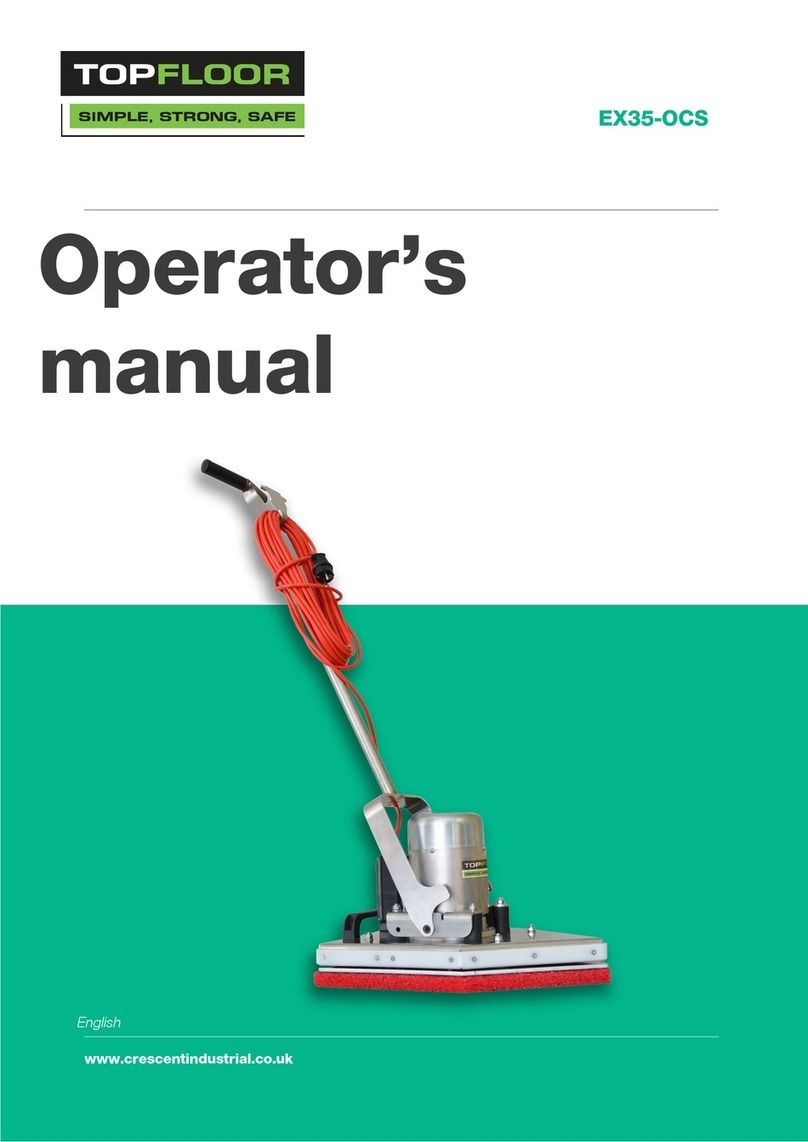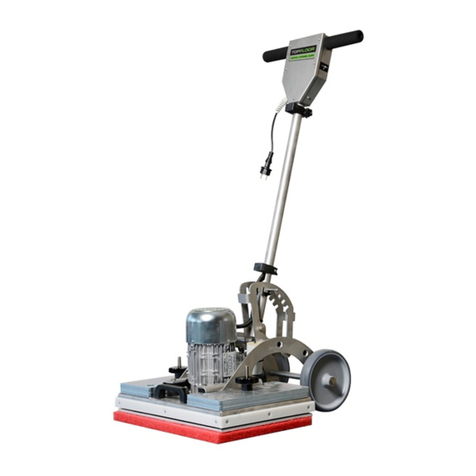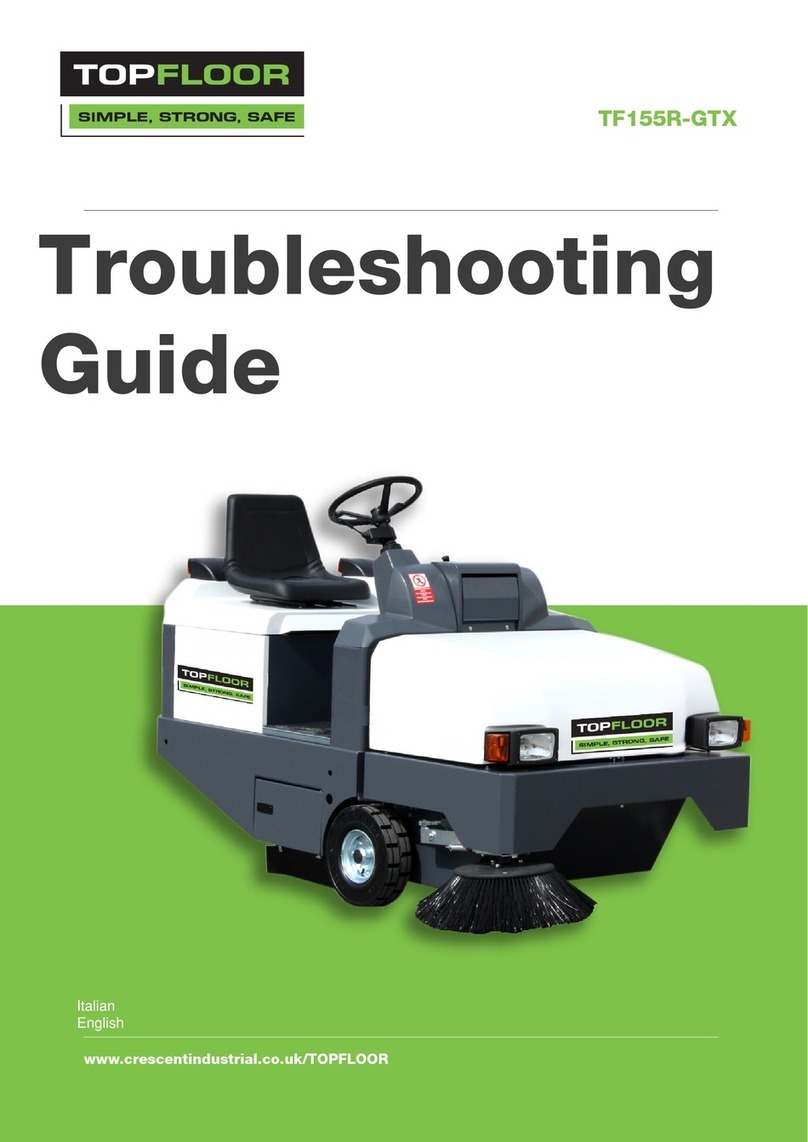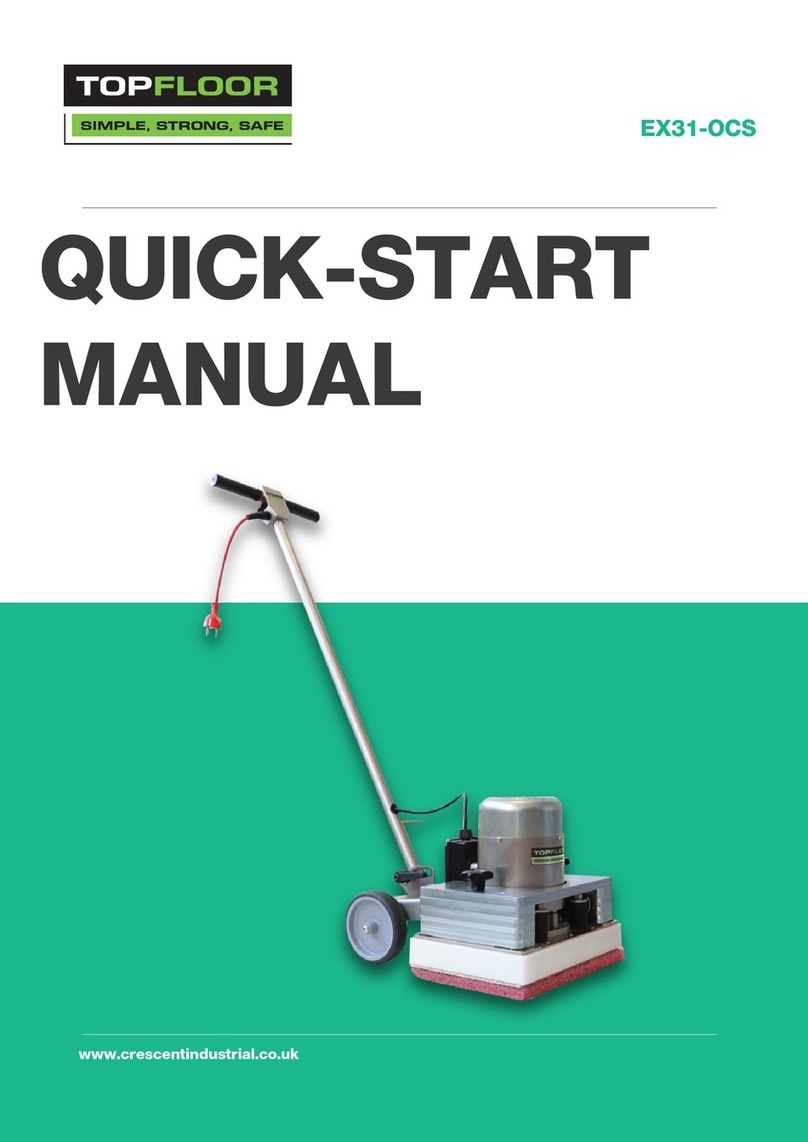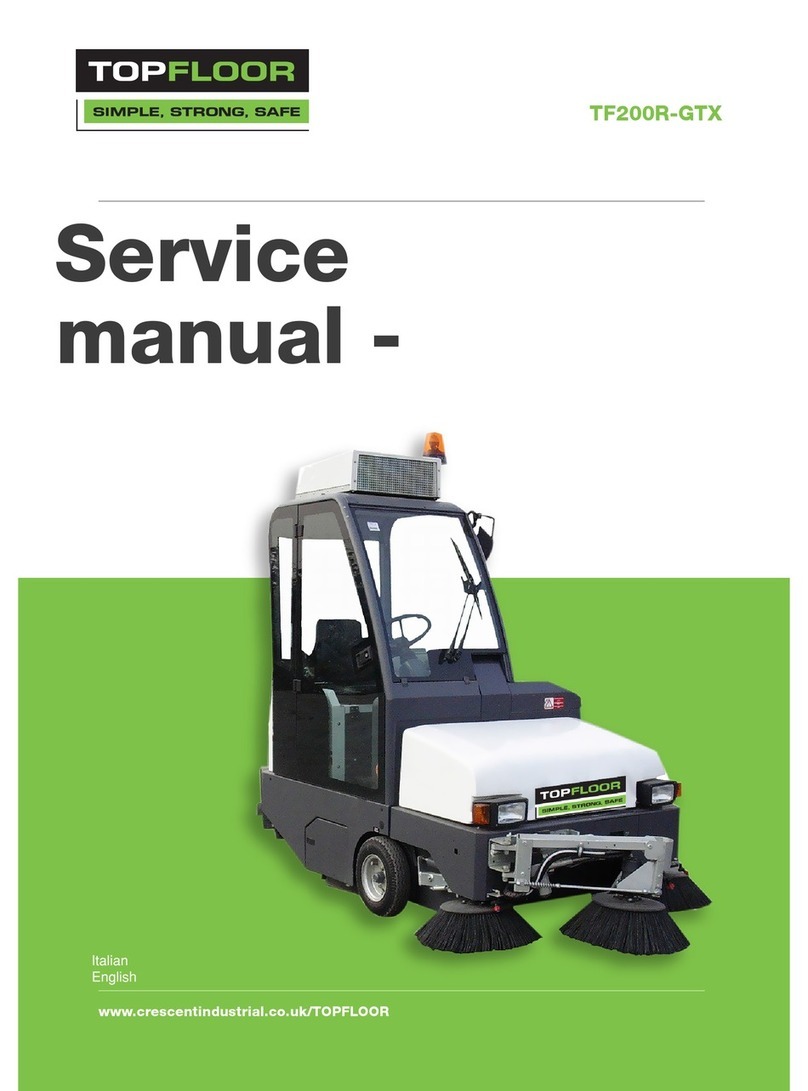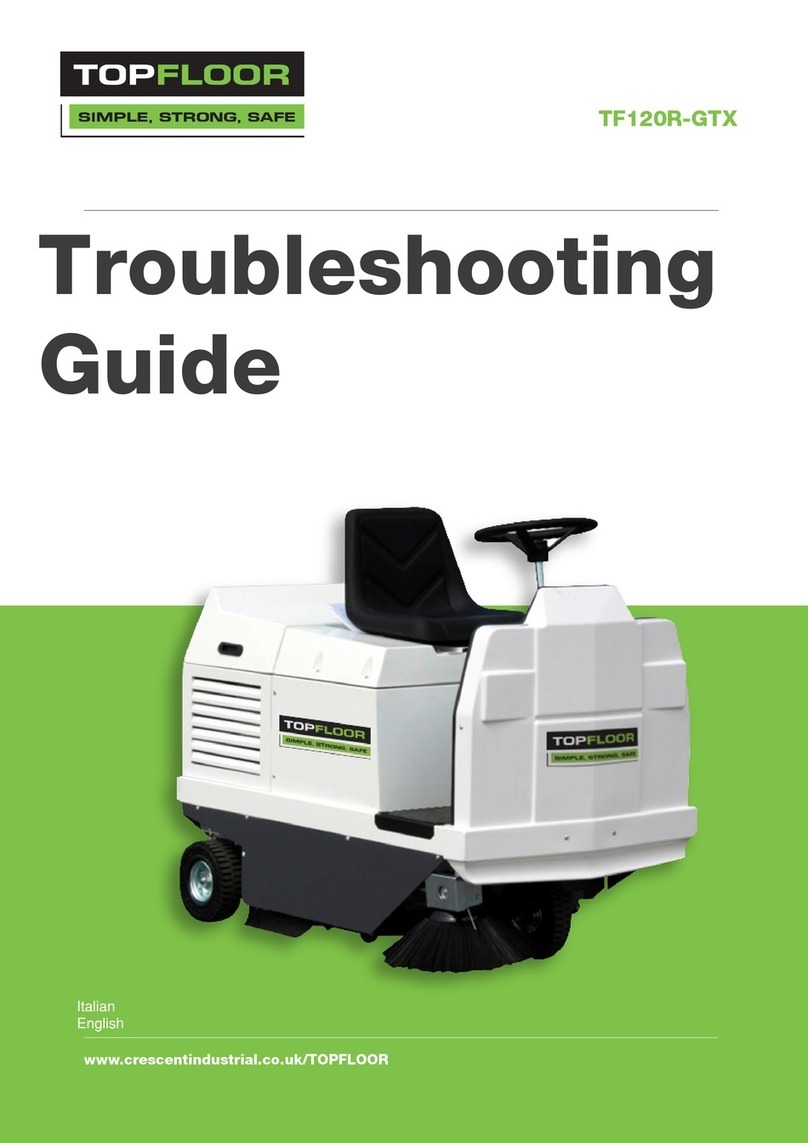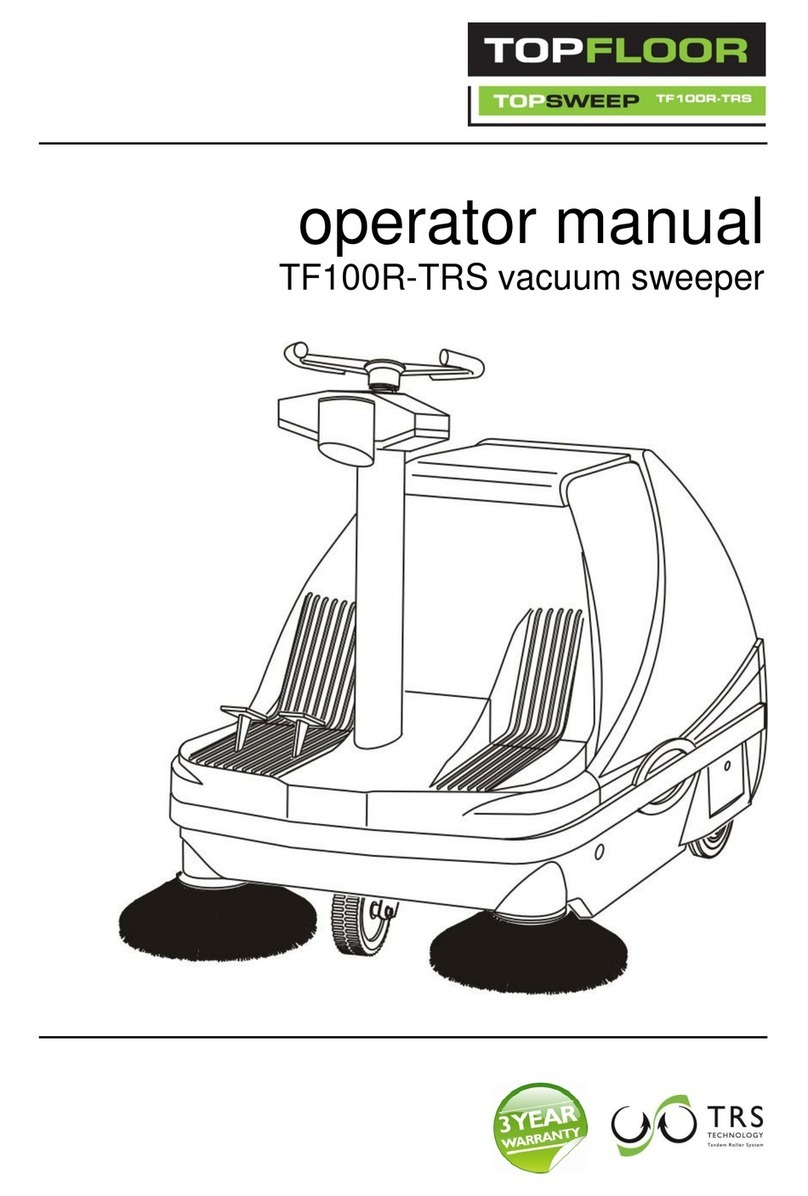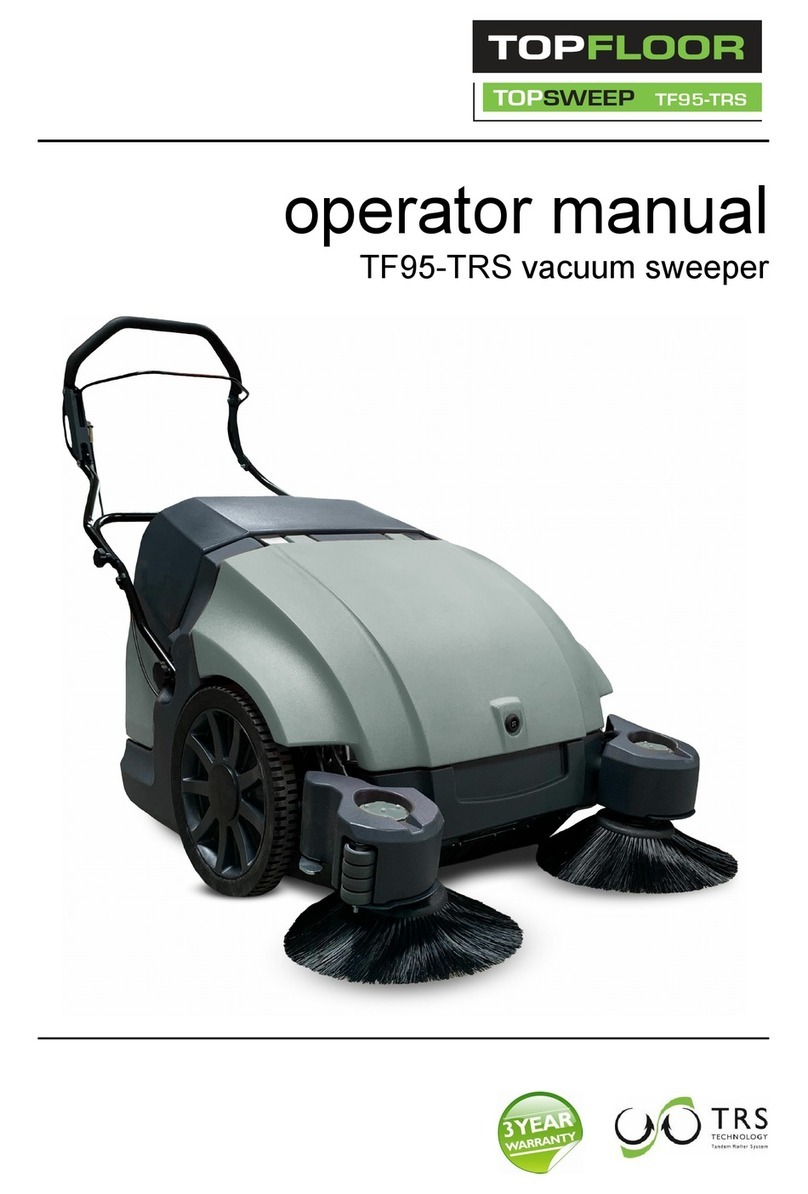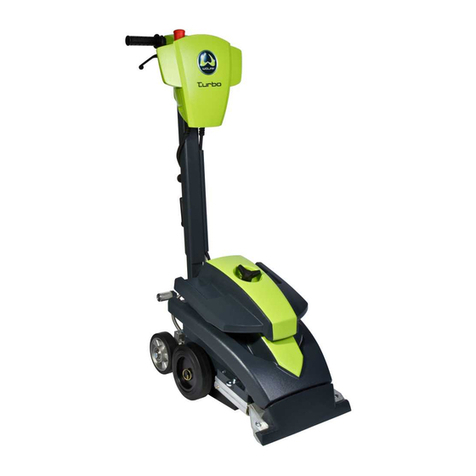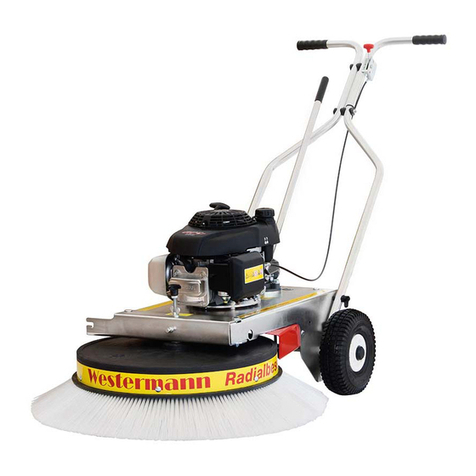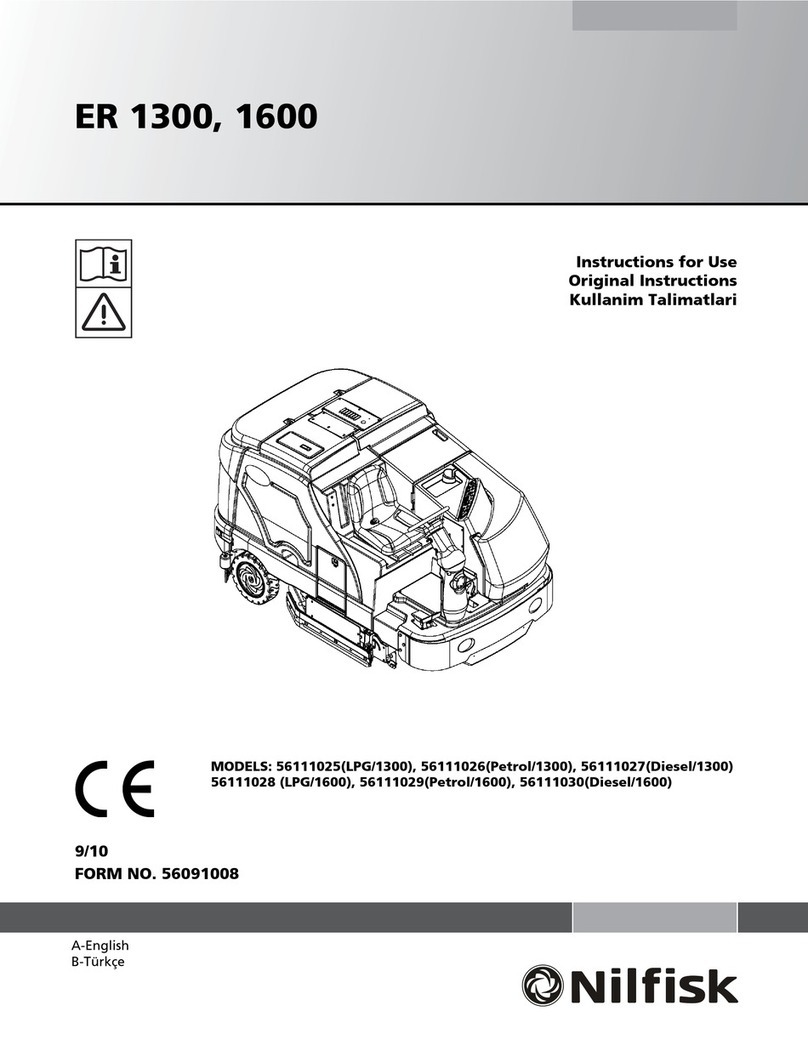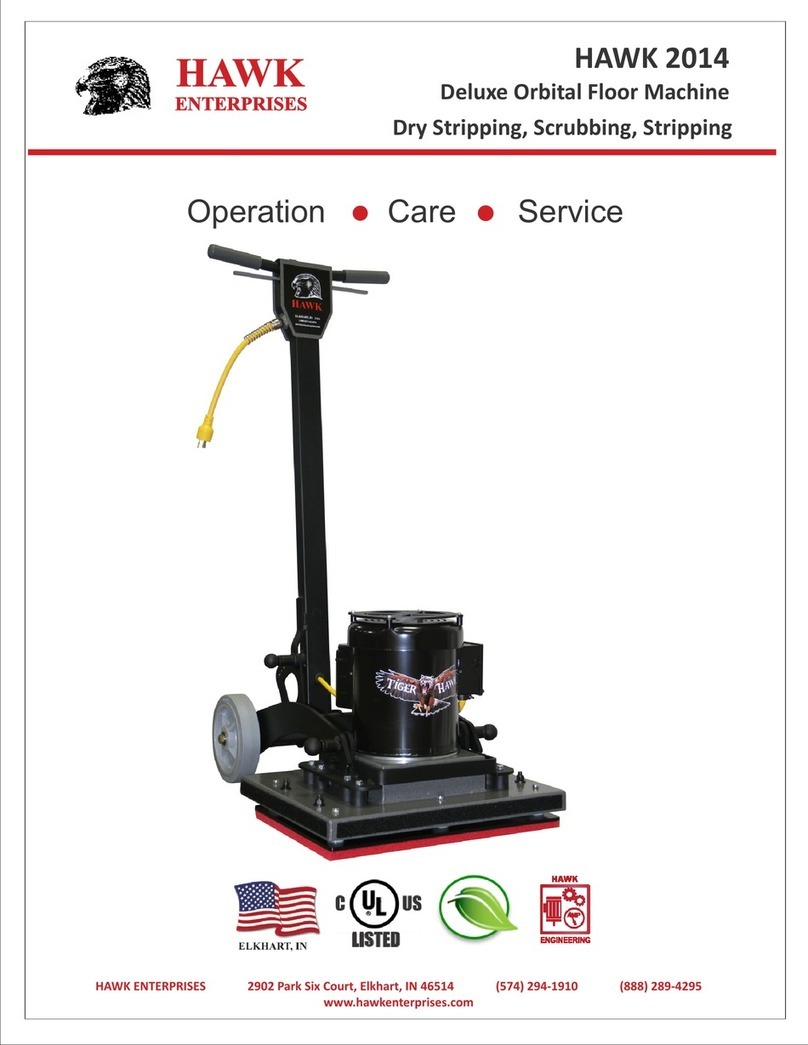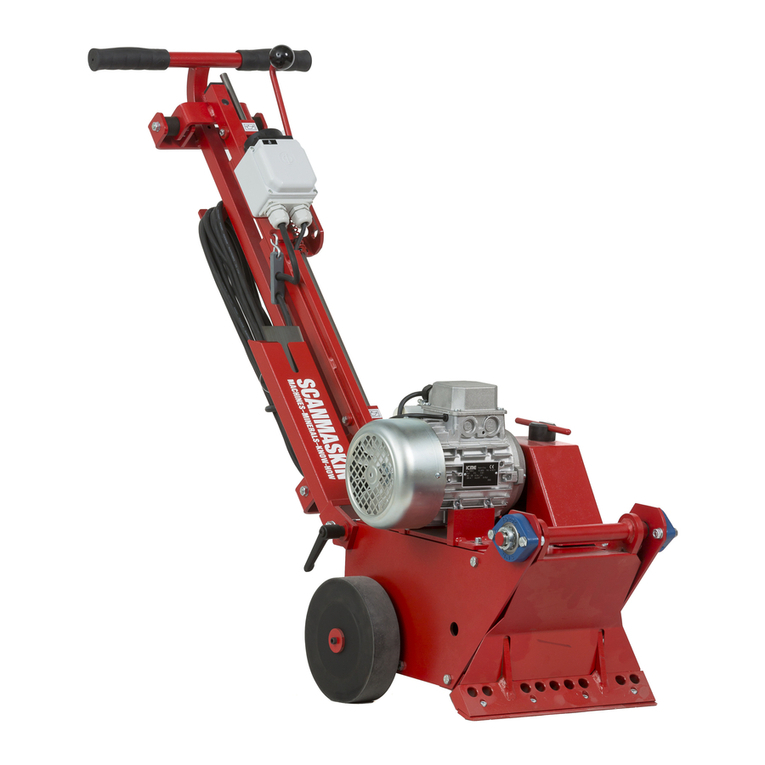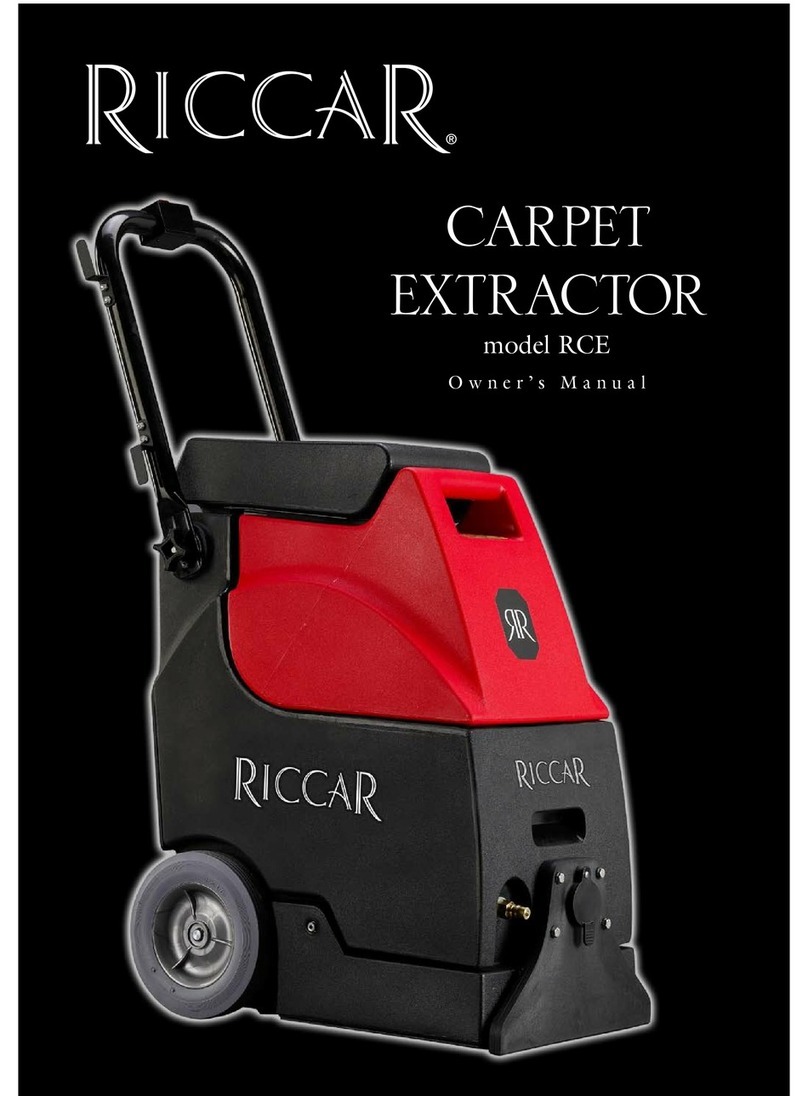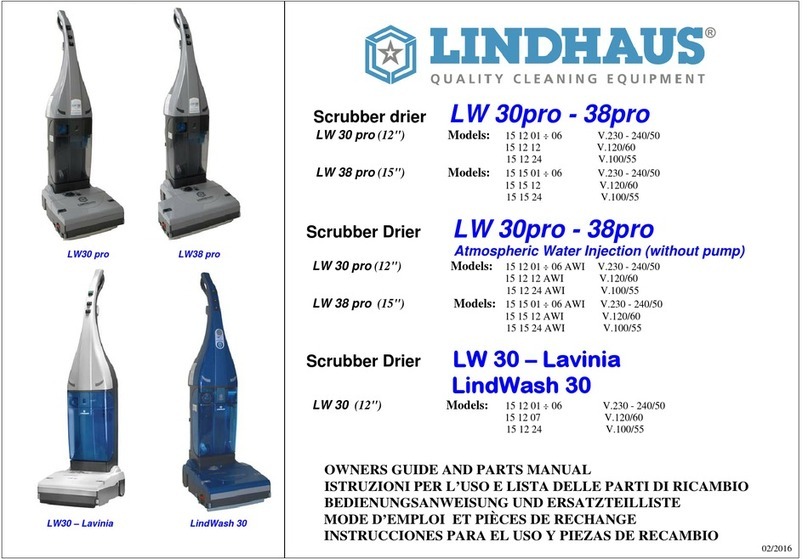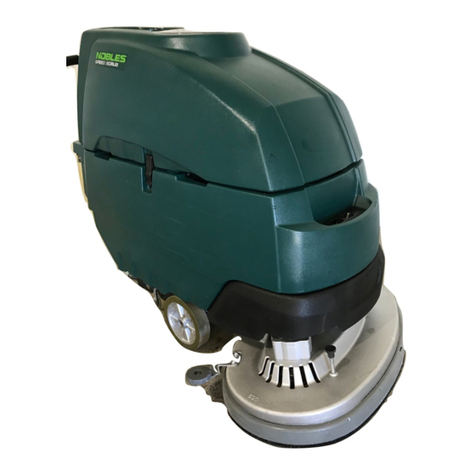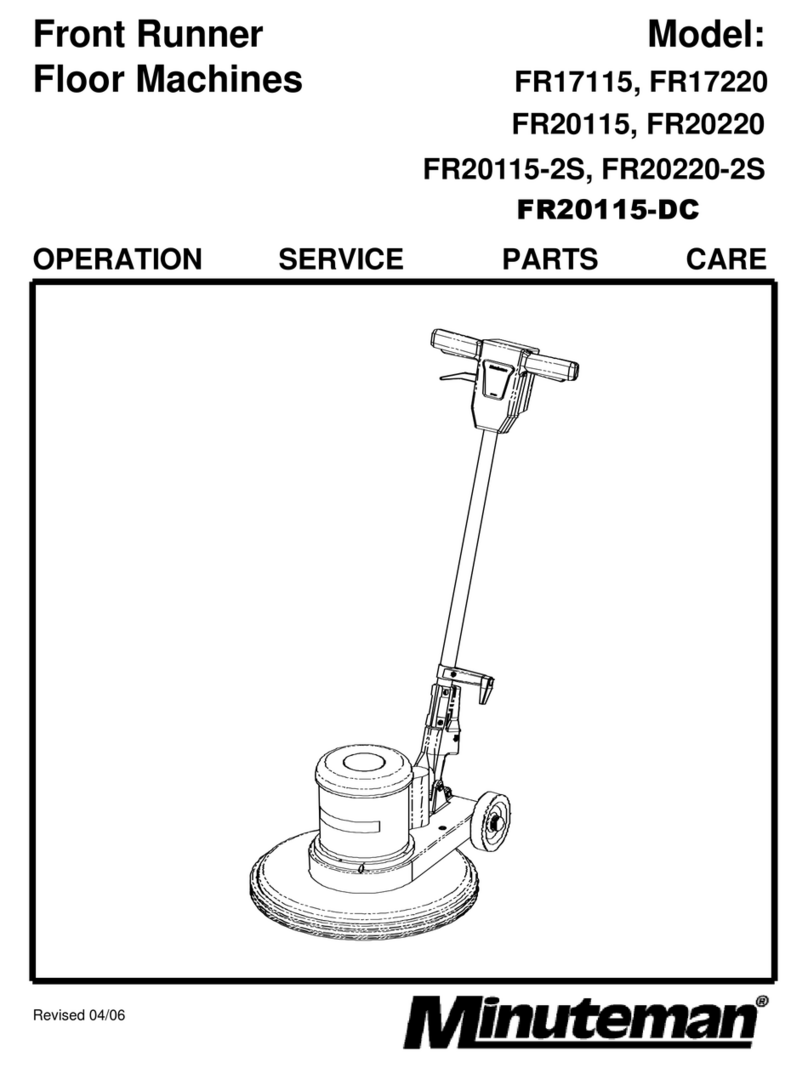- Utilizzare solo bombole cilindriche con gas GPL per
motori endotermici di tipo approvato.
- Operare in luoghi aerati, lontano da fonti di calore e
da apparecchi elettrici, non fumare o usare fiamme
libere.
- Assicurarsiche la chiave diavviamentosia disinserita.
- Prima di procedere alla sostituzione, assicurarsi che
il rubinetto della bombola da sostituire e quello della
bombola nuova siano ben chiusi.
- Prima di allentare i raccordi di tubazioni o di tubi
flessibili occorre spegnere la macchina e chiudere
il rubinetto della bombola. I raccordi delle tubazioni
vanno allentati lentamente ed in un primo tempo solo
parzialmemte, altrimenti il gas che si trova sotto pres-
sione nella tubazione fuoriesce violentemente con
possibile pericolo di ustioni da basse temperature.
- Quando si installa un recipiente amovibile per gas
(es. bombole), questo deve essere montato sulla
macchina in posizione orizzontale con il raccordo
filettato del rubinetto orientato verso il basso. Prima
di collegare la bombola del gas, controllare la com-
patibilità dei raccordi con il tubo.
- Dopo la sostituzione della bombola eseguire la prova
di tenuta degli allacciamenti con acqua saponata,
soluzione Nekal o altri mezzi schiumogeni. E’ vietato
ispezionare l’impianto a gas liquido con una fiamma
libera.
- La Ditta Costruttrice declina ogni responsabilità con-
seguente a:
- Utilizzo di serbatoi non conformi;
- Errata installazione degli stessi;
- Messa in servizio della macchina senza aver ri-
spettato le prescrizioni regolamentari e legislative
vigenti in materia di sicurezza nel paese in cui viene
utilizzata.
- Si rimanda a tutte le prescrizioni e regolamenti
nazionali o locali sul trattameto e conservazione di
contenitori pieni, mobili e chiusi per gas compressi,
liquefatti e disciolti sotto pressione.
Rispettare tutti i requisiti generali per l’utilizzazione
e l’immagazzinaggio dei recipienti sotto pressione
previsti dalle norme vigenti.
1.9.m - NORME DI SICUREZZA GENERALI PER IL
CONTROLLO E LA VERIFICA DELL’IMPIAN-
TO A GPL
- Occorre controllare frequentemente che l’intero im-
pianto a gas liquido funzioni in modo sicuro, tenendo
particolarmente in considerazione la tenuta di tutte le
sue parti. E’ vietato usare la macchina qualora l’im-
pianto a gas liquido presenti delle fughe di gas. Per
controllare la tenuta dell’impianto utilizzare: acqua
saponata, soluzione Nekal o altri mezzi schiumogeni.
E’ vietato ispezionare l’impianto a gas liquido con una
fiamma libera.
- Controllare frequentemente il tubo tra bombola e
impianto GPL; non deve presentare strozzature o
stiramenti. Sostituire il tubo se danneggiato o defor-
mato.
Industrial Sweeper
- Only use cylindrical Liquid Propane Gas tanks for
endothermic motors of the approved type.
- Work in well ventilated areas, away from sources of
heat and from electric devices, do not smoke or use
open flames.
- Make sure that the ignition key is not inserted.
- Before replacing the tank, make sure that the tap of
the tank to be replaced and that of the new tank are
well closed.
- Before slackening the fittings of pipes or hoses, turn
off the machine and close the bottle’s cock. The pipe
fittings must be slackened slowly and only partially at
first, otherwise the gas under pressure in the pipes
will come out violently, with a possible danger of
freeze burns.
- When a removable gas container (for ex. bottles) is
installed, this shall be assembled on the machine
in horizontal position, with the cock threaded fitting
looking downwards. Before connecting the gas bottle,
check the compatibility of the fitting with the pipe.
- After replacing the bottle, carry out the leak test on
suds, Nekal solution or other foaming agents con-
nections. Inspecting the liquid gas system with open
flames is forbidden.
- The Manufacturer declines any responsibility resul-
ting from the following:
- Use of a non-conforming tank;
- Incorrect installation of the tank;
- Commissioning of the machine without having
complied with the safety-related regulations and
law provisions in force in the country where the
machine is being used is forbidden.
- Please refer to all the provisions and national or local
regulations on the handling and storage of full, mobile
and closed containers for compressed, liquefied and
dissolved pressurized gases.
Comply with the general requirements for the use
and storage of pressurized containers provided for
by the laws in force.
1.9.m - GENERAL SAFETY RULES FOR LPG SY-
STEM CHECKS
- Frequently verify the good and safe operation of the
whole liquid gas system, paying special attention to
the tightness of all its parts.
It is forbidden to use the machine if there is any leak
in the liquid gas system.
To check the installation tightness, use: suds, Nekal
solution or other foaming agents. Inspecting the liquid
gas system with open flames is forbidden.
- Frequently check the pipe going from the tank to
the LPG system; it must not be choked or stretched.
Replace the pipe if it is damaged or deformed.




















